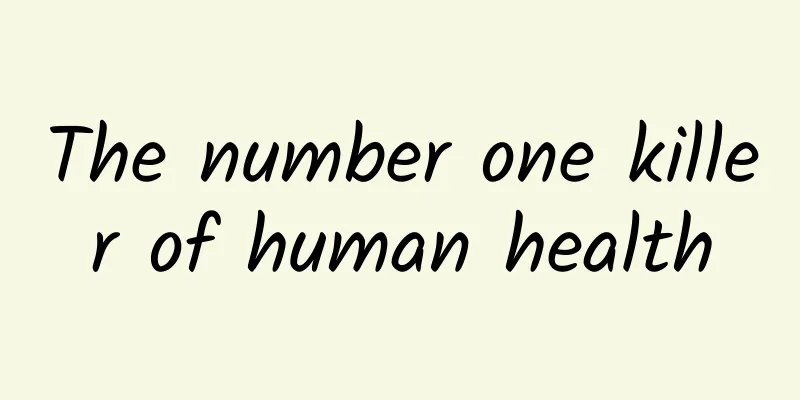The number one killer of human health

|
This is the 4717th article of Da Yi Xiao Hu In recent days, with the change of weather, more and more patients have come to the emergency room for headaches, dizziness, hemiplegia of one side of the limbs, etc. The causes of these symptoms are often related to stroke. According to statistics, there are about 2 million new cases of stroke in my country every year, which means that there is a new stroke patient every 12 seconds; more than 1.5 million people die from stroke every year, which means that there is one person who dies from stroke every 21 seconds. Stroke has become the leading cause of disability and death in my country, and it is becoming younger and younger, gradually becoming the "number one killer" of human health. What is a stroke? Stroke, also known as "stroke" or "cerebrovascular accident", is an acute cerebrovascular disease. It is a group of diseases that cause brain tissue damage due to sudden rupture of brain blood vessels or blockage of blood vessels, which prevents blood from flowing into the brain. It includes two major categories: ischemic and hemorrhagic stroke. Symptoms last at least 24 hours, but symptoms that only last for a few minutes or hours should also be taken seriously. Why do people have a stroke? 1. Vascular risk factors The most common cause of stroke is small emboli on the inner wall of the blood vessels supplying the brain, which break off and cause arterial-arterial embolism, i.e. ischemic stroke. It may also be caused by bleeding from cerebral blood vessels or thrombosis, which is a hemorrhagic stroke. Studies have found that early morning hypertension is the strongest independent predictor of stroke events. The risk of ischemic stroke in the early morning is four times that of other times. For every 10 mmHg increase in blood pressure in the morning, the risk of stroke increases by 44%. The main cause of stenosis and occlusion of the internal carotid artery or vertebral artery is atherosclerosis, and bleeding due to ruptured blood vessels can also cause stroke. 2. Gender, age, race, etc. Studies have found that the incidence of stroke in the Chinese population is higher than that of heart disease, which is the opposite of the European and American populations. 3. Unhealthy lifestyle There are usually multiple risk factors at the same time, such as smoking, unhealthy diet, obesity, lack of exercise, excessive drinking and high homocysteine; as well as some underlying diseases such as hypertension, diabetes and hyperlipidemia in patients. All of these increase the risk of stroke. How to recognize a stroke? 1. Smile Smile and check if there is any crookedness or asymmetry at the corners of your mouth. 2. Lift it Raise your hands horizontally and check if one side of your limbs cannot be lifted or if the limbs are weak. 3. Talk about it Ask them to answer questions and check if they have difficulty expressing themselves or their speech is unclear. If any of the above three items are abnormal, it can be preliminarily considered as a stroke. If you are unconscious or have symptoms of a stroke, you should immediately call the emergency number 120 and be sent to a hospital with stroke treatment capabilities. How to perform first aid for stroke? 1. Lie flat Lay him/her flat with collar and belt loosened. 2. Head tilt When the patient is unconscious or experiencing nausea and vomiting, tilt the patient's head to one side to prevent choking due to vomit. If the patient has removable dentures, remove them immediately. 3. Side lying Turn the patient to lie on his side. Take the right side position as an example. Lift the patient's right arm and place it on the side of the head. Put the patient's left hand on the right shoulder. Bend the left leg. The rescuer puts both hands on the patient's left shoulder and left knee. Turn the patient over and keep him warm. At the same time, closely observe the changes in his breathing and pulse. How to prevent stroke? Stroke is also preventable. We need to correct our wrong ideas and unhealthy lifestyles and consciously avoid the risk factors of stroke. Primary prevention That is, for people with risk factors for stroke, actively treat the risk factors, regularly monitor the occurrence of other risk factors and take targeted measures to reduce the occurrence of the disease; it has been proven that smoking cessation, limiting the salt content in the diet, eating more fresh fruits and vegetables, exercising regularly, and avoiding excessive drinking can reduce the risk of cardiovascular disease. In addition, drug treatment is also needed for diabetes, hypertension and hyperlipidemia to reduce the risk of cardiovascular disease and prevent stroke. Secondary prevention That is, for patients who have suffered one or more strokes, early diagnosis and early treatment are given to prevent the occurrence of serious cerebrovascular disease. The five commonly used antihypertensive drugs can be used for secondary prevention of stroke; secondary prevention of cardiovascular disease is carried out for people who already have other diseases such as diabetes. These intervention measures, combined with smoking cessation, can often prevent nearly 75% of recurrent vascular events. Three-level prevention That is, for patients who have already suffered a stroke, rehabilitation care should be strengthened to prevent the condition from worsening. After a stroke occurs, brain tissue will die after a certain period of time (usually 3 hours), and it is usually impossible to treat it within an effective time. Studies have shown that less than 1% of patients (perhaps less than 1 in 10,000 in China) can receive timely treatment. Therefore, as long as timely treatment is given after a stroke occurs, some patients can recover completely without any sequelae. How to treat? Severe stroke can cause permanent neurological damage. If it is not diagnosed and treated in time during the acute phase, it can cause serious complications or even death. Stroke can be divided into hemorrhagic stroke and ischemic stroke, and different treatment methods are used according to the location of the stroke. Specific treatments include thrombolysis, antiplatelet therapy, early anticoagulation and neuroprotection, while non-specific treatments include antihypertensive therapy, blood sugar management, management of cerebral edema and intracranial hypertension, etc. 1. Drug treatment Thrombolytic therapy is currently recognized as the most effective treatment for stroke, but there are strict time window requirements (intravenous thrombolysis is limited to 4.5 hours, and arterial thrombolysis can be appropriately extended). For patients with existing stroke and hypertension, blood pressure control during the acute phase of stroke should be carried out in accordance with stroke guidelines. The goal of blood pressure treatment for chronic or old stroke should generally be <140/90 mmHg. For patients with hyperlipidemia and diabetes, the blood pressure reduction target should be <130/80 mmHg. The principle of antihypertensive treatment for stroke is to control blood pressure steadily, persistently and effectively for 24 hours, especially blood pressure in the morning. 2. Surgical treatment (1) Carotid endarterectomy is suitable for patients with severe stenosis of the extracranial segment of the internal carotid artery (stenosis degree exceeds 70%), where the stenosis is below the mandibular angle and is accessible for surgery. Surgery can also be considered for patients with complete occlusion of the internal carotid artery within 24 hours. Surgery is not suitable for patients with occlusion for more than 24 to 48 hours and encephalomalacia. (2) Extracranial-intracranial artery anastomosis is effective in preventing TIA. The superficial temporal artery-middle cerebral artery anastomosis, occipital artery-posterior inferior cerebellar artery anastomosis, occipital artery-posterior cerebral artery anastomosis, etc. can be used. When should we start preventing stroke? Prevention of stroke should start from childhood because the pathological changes of arteriosclerosis often begin in childhood and gradually worsen with age, which is mainly related to childhood obesity caused by excessive fat content in food and high-sugar diet. Hyperlipidemia and obesity are the main causes of arteriosclerosis. From an early age, it is extremely beneficial to properly control the intake of high-cholesterol and high-sugar foods, eat more fruits and vegetables, develop a habit of not being picky eaters and not overeating, actively participate in various sports, and develop good living habits. Therefore, we must pay attention to the occurrence of stroke, learn to judge for ourselves, and conduct regular screening to detect disease problems early. Early diagnosis and early treatment can effectively prevent the occurrence of stroke. Author: Lingang Branch of Shanghai Sixth People's Hospital Emergency Department Nurse Qu Beihong |
>>: "The first fruit of winter", sweet and sour taste
Recommend
Vaginal itching and yellow discharge
Recently, some female friends often have the symp...
How to do the 4D scan? Will it hurt?
Four-dimensional color ultrasound is an examinati...
What are the benefits of women drinking yogurt every day?
We all know that yogurt is rich in various nutrie...
Can ovarian tumors be cured?
Ovarian cancer is a malignant tumor that emphasiz...
At what age do girls start to develop?
At what age do girls start to develop is a hot to...
What food to eat to maintain the ovaries
With the improvement of the quality of life, peop...
What are the early symptoms of herpes in women?
Herpes is a relatively common reproductive diseas...
There are several methods of contraception for women
Contraceptive measures are very important for wom...
Is it easier to have sex on the day of ovulation to have a boy or a girl?
If the menstrual cycle is regular, the calculatio...
What is the city tree of Sanya? Can I drive to Sanya by myself?
The hottest time in Sanya is from May to August. ...
Medical abortion without blood clots
The working principle of medical abortion is to i...
What is the phenomenon of early abdominal pain in pregnant women
Pregnant women will cause a series of problems in...
What is the inflammation of leucorrhea
Women's secretions are also a symbol of femal...
National pharyngitis? COVID-19 and influenza A co-circulation? How to protect yourself during holidays?
Editor: Muzi...
Best surgery for cervical fibroids
Everyone may not be very familiar with cervical u...









